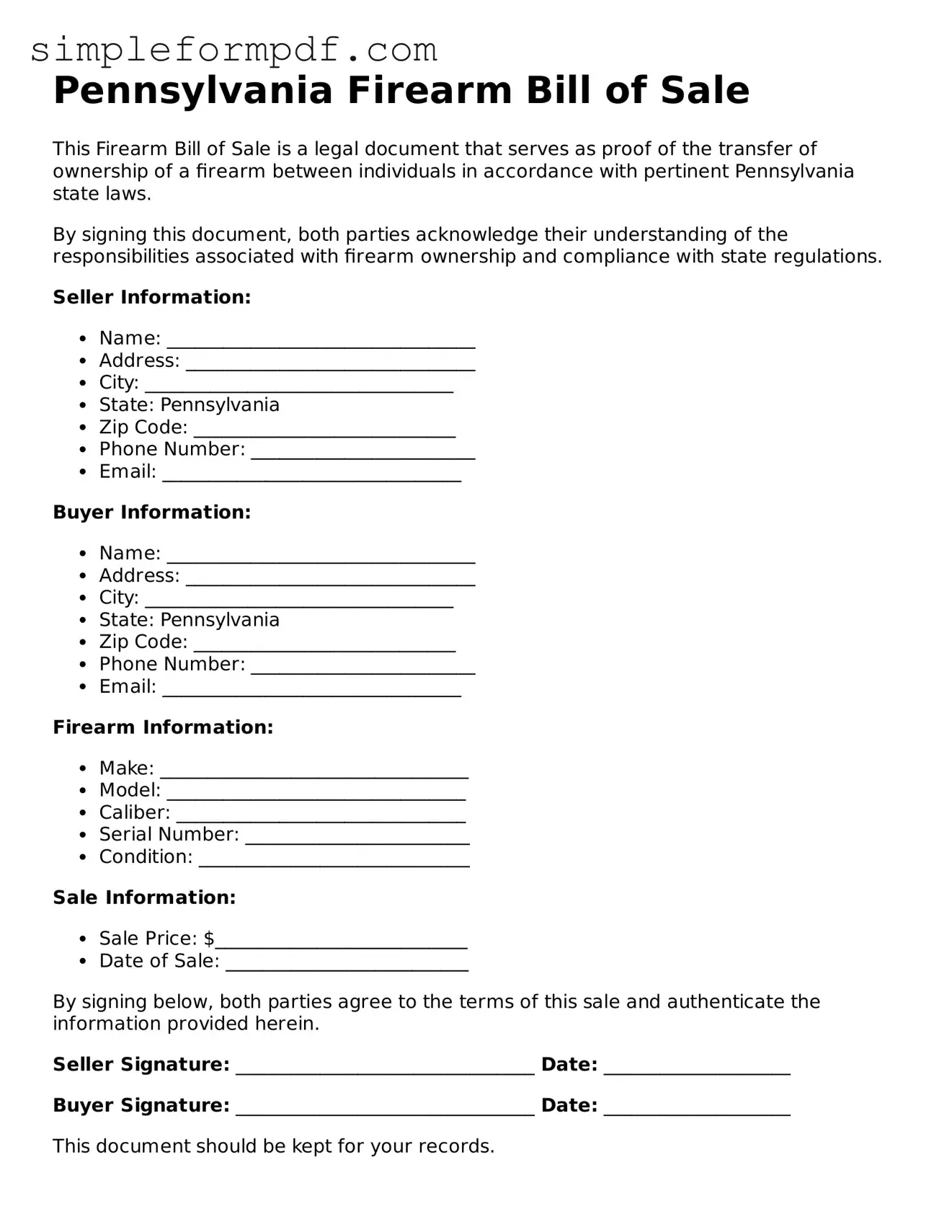Pennsylvania Firearm Bill of Sale
This Firearm Bill of Sale is a legal document that serves as proof of the transfer of ownership of a firearm between individuals in accordance with pertinent Pennsylvania state laws.
By signing this document, both parties acknowledge their understanding of the responsibilities associated with firearm ownership and compliance with state regulations.
Seller Information:
- Name: _________________________________
- Address: _______________________________
- City: _________________________________
- State: Pennsylvania
- Zip Code: ____________________________
- Phone Number: ________________________
- Email: ________________________________
Buyer Information:
- Name: _________________________________
- Address: _______________________________
- City: _________________________________
- State: Pennsylvania
- Zip Code: ____________________________
- Phone Number: ________________________
- Email: ________________________________
Firearm Information:
- Make: _________________________________
- Model: ________________________________
- Caliber: _______________________________
- Serial Number: ________________________
- Condition: _____________________________
Sale Information:
- Sale Price: $___________________________
- Date of Sale: __________________________
By signing below, both parties agree to the terms of this sale and authenticate the information provided herein.
Seller Signature: ________________________________ Date: ____________________
Buyer Signature: ________________________________ Date: ____________________
This document should be kept for your records.
